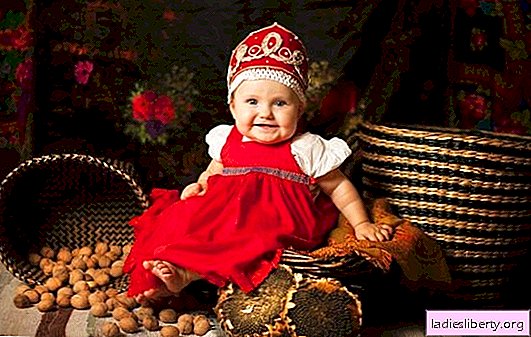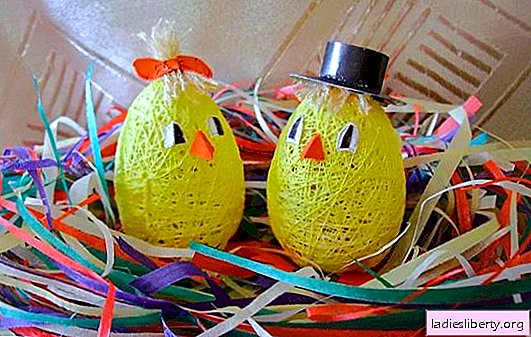
Rod Petunia (Petunia) from the Solanaceae family (Solanaceae) includes 25 species of annual and perennial plants, herbaceous or semi-shrub. Their homeland is the tropical regions of South America, mainly Brazil, where petunia was found and described in 1767. At present, its natural habitat is Paraguay, Bolivia, Argentina and Uruguay. This plant can reach a height of up to 10 m, its stems can be erect or creeping.
Petunia seeds were introduced to Europe in 1820, and since then, thanks to its unique adaptability to various cultivation conditions, soil and climate, simple farming techniques, and most importantly - the duration and extraordinary beauty of flowering, it has become one of the favorite crops in decorative gardening, and interest in it is growing every year.
Petunias are attractive for their flowers - white, purple or red, simple or terry. Today, their bright fragrant cascades everywhere are decorated with flower beds, flower beds, rabatki, curbs and balconies, starting from the first summer days until frost.
Petunia - growing and care
Petunia is a light-loving and heat-loving plant, so for it you need to choose open sunny areas with loamy or sandy soils, although any fertile land is suitable for this plant. Humus or compost can be applied to the soil. Fresh manure can not be made, since this can provoke the development of fungal diseases in the flower. Soil preparation for petunia in areas with acidic soils should include the addition of lime (from 200 g to 300 g per square meter). In case of spring digging of the soil, it is necessary to add complex fertilizer to it.
Large-flowered petunias are more thermophilic than small-flowered, and in wet cold weather they can stop flowering. All petunias easily tolerate drought due to its root system, which branches well and braids the surface layers of the soil. And yet, the long absence of moisture involves watering plants. Watering petunia should be plentiful, as it is not afraid of excess moisture, but this should be done carefully, pouring water at the root, so as not to harm the flowers.
Very poorly the decorative properties of petunias are affected by the rains, as their drops, tearing the delicate petals, give the flowers a very sloppy look. In addition, prolonged rains can lead to cessation of flowering.
For abundant and prolonged flowering of petunias should be regularly fed. Start feeding should be a week after planting plants in the ground. Feed the plant every 7-10 days with complex fertilizers, preferably with a high content of potassium. Very good for plant growth and flowering affects fertilizing with organic fertilizers, including mullein infusion. Regular feeding should continue until August.
Petunia - replanting and reproduction
Petunias breed by seeds, with the exception of varieties with double flowers, which are usually propagated by cutting.
For good germination of petunia seeds a very important condition is the abundance of light. As a rule, they are sown in March. In the presence of illumination sowing of seeds produced in February. Another important factor affecting the successful reproduction of petunias with seeds is the quality of the soil and its moisture. Such seeds germinate well only in loose, light and nutritious soil. Ideally, its upper layer of about 1 cm should consist of sifted earth, it is necessary for the uniform occurrence of seeds. They should be mixed with dry sand, poured into well-moistened soil, spray and cover with glass. When the content of sowing at a temperature of 20 ° C to 23 ° C in about a week, tiny shoots will appear. They must be sprayed every day and turned towards the light several times a day. At this time, the sowing moisture is of particular importance. On the one hand, seedlings need high humidity, and on the other hand, with its excess, they can die from the "black leg".
After the emergence of the seedlings of the first sheet to remove glass. If the seedlings start to hurt, they are powdered with dry sand, reduce watering and dive. Planting in the ground at a permanent place of cultivation should be made after the spring frosts completely stop. Transplantation of flowers is well tolerated, but it must be remembered that they have very fragile stems, so any actions with petunias, be it transplanting, watering or feeding, must be done very carefully and carefully.
It is better to plant seedlings on cloudy days or in the evening. Plants in planting should be spaced from each other at a distance of 15 cm to 20 cm for small-flowered varieties and from 20 cm to 25 cm for large-flowered ones. After planting, seedlings need to be watered, and the soil around it should be mulched with peat or humus, so that it retains moisture longer and can protect the plant from returning frosts. Small-flowered petunias begin to bloom 70-75 days after sowing, large-flowered - 2 weeks later.
During reproduction by cutting the petunias with double flowers, the cuttings are cut from the mother plants and kept in winter in good light and at a temperature of 10 ° C to 12 ° C, ensuring moderate humidity and intensive ventilation. After rooting, they are transplanted into small pots (with a diameter of up to 9 cm).
Petunia - Diseases and Pests
Petunias are considered quite hardy plants, but if the growing conditions are violated, they can be exposed to diseases and pests.
For example, too thick sowing, excess moisture, heavy soil can lead to the defeat of plants fungal diseases, especially root rot, the so-called "black leg". It can be recognized by softening and darkening of the root part of the stem. Having recognized the disease, you should immediately remove the diseased plant and part of the surrounding land, and treat the remaining plants with fungicides.
Another fungal disease of petunias is powdery mildew, which manifests as a white bloom on leaves and flowers. It occurs due to sudden changes in temperature and humidity, especially in heat. In this case, the affected parts of the plant must be removed and the remaining plant treated with sulfur.
Petunias can also be affected by pests. The most common of them - spider mite, aphid, whitefly. To combat them spend spraying ready-made systemic insecticides.











